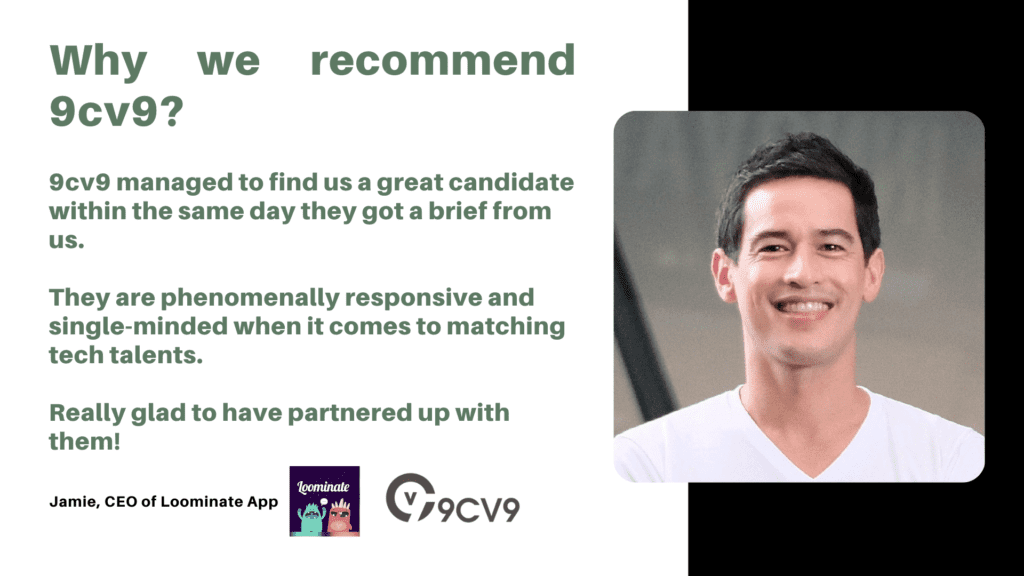Key Takeaways
- Strategic Digital Recruitment: Leverage online platforms effectively to tap into Sydney’s diverse talent pool. Craft compelling job descriptions and optimize your presence on job platforms for maximum visibility.
- Navigating Legalities with Precision: Ensure compliance with Australian employment laws, visa regulations, and data protection requirements. A meticulous approach to legalities establishes a foundation for ethical and lawful recruitment practices.
- Holistic Onboarding and Retention: Elevate employee experience with seamless onboarding, local immersion activities, and retention strategies. From competitive compensation to professional growth, create an environment where talent not only joins but thrives in Sydney’s dynamic professional landscape.
In the vibrant and dynamic business landscape of Sydney, Australia, the pursuit of exceptional talent is a cornerstone for organizational success.
As the bustling capital of New South Wales, Sydney stands as a global economic hub, boasting a diverse range of industries that contribute to its thriving employment market.
Whether you’re a burgeoning startup, a mid-sized enterprise, or a well-established corporation, navigating the intricacies of hiring employees and talents in Sydney requires a strategic approach tailored to the unique aspects of this cosmopolitan city.

This comprehensive guide is your compass through the intricate journey of talent acquisition in Sydney, offering insights, strategies, and practical tips to streamline your hiring process and attract the finest professionals to join your team.
From understanding the nuances of the Sydney job market to crafting compelling job descriptions that resonate with local talent, we delve into the specifics that set Sydney apart as a hiring destination.
Unveiling Sydney’s Economic Tapestry: At the heart of effective talent acquisition is a profound understanding of Sydney’s economic landscape.
This bustling metropolis encompasses a kaleidoscope of industries, including finance, technology, healthcare, and creative sectors, each contributing to the city’s economic vibrancy.
In this guide, we’ll explore the key drivers shaping Sydney’s job market, providing you with valuable insights to tailor your hiring strategies to the current economic climate.
Decoding the Sydney Talent Pool: Sydney’s multicultural environment contributes to a diverse talent pool, comprising individuals with varying skill sets, backgrounds, and experiences.
We’ll unravel the layers of this talent tapestry, helping you identify and target the specific skill sets relevant to your industry.
Whether you’re in the finance district of Barangaroo or the tech hub of Surry Hills, understanding the demographics of your potential hires is paramount to a successful recruitment strategy.
Crafting Irresistible Job Descriptions: A job description is more than a list of qualifications and responsibilities; it’s a dynamic tool that can attract top-tier talent or leave your vacancies overlooked.
Our guide dives deep into the art of crafting job descriptions tailored for the Sydney audience, emphasizing the unique aspects of the city’s work environment that make your opportunities stand out in a sea of options.
Embark on this insightful journey with us as we explore the strategies, tactics, and best practices to not only hire employees but to build a team that thrives in the energetic and diverse landscape that is Sydney, Australia.
Whether you’re a local business aiming to strengthen your workforce or an international organization expanding its horizons, this guide is your roadmap to recruiting success in the heart of Down Under.
Before we venture further into this article, we like to share who we are and what we do.
About 9cv9
9cv9 is a business tech startup based in Singapore and Asia with a strong presence all over the world.
With over eight years of startup and business experience, and being highly involved in connecting with thousands of companies and startups, the 9cv9 team has listed some important learning points in this overview of How to Hire Employees and Talents in Sydney, Australia.
If your company needs recruitment and headhunting services to hire top SEO employees, you can use 9cv9 headhunting and recruitment services to hire top talents and candidates. Find out more here, or send over an email to [email protected].
Or just post 1 free job posting here at 9cv9 Hiring Portal in under 10 minutes.
How to Hire Employees and Talents in Sydney, Australia
- Understanding the Sydney Job Market
- Crafting a Compelling Job Description
- Utilizing Online Job Platforms
- Networking and Building Local Connections
- Streamlining the Hiring Process
- Navigating Legalities and Compliance
- Employee Onboarding Best Practices
- Retention Strategies for Sydney Employees
- Measuring Recruitment Success
1. Understanding the Sydney Job Market
1. Overview of Sydney’s Economic Landscape
- Sydney’s Economic Prowess:
- As Australia’s largest and most populous city, Sydney stands as a financial powerhouse and a major player in the Asia-Pacific region. With a GDP of over AUD 500 billion, the city’s economic vitality is underscored by its robust financial services, real estate, and tourism sectors (Australian Bureau of Statistics).
- Financial Services Sector:
- Sydney’s central business district (CBD) is home to numerous financial institutions, making it the financial heart of Australia. The city hosts the headquarters of major banks, including the Commonwealth Bank, Westpac, and ANZ, contributing significantly to the financial sector’s growth.
- Technology and Innovation Hub:
- Sydney has emerged as a burgeoning technology and innovation hub, fostering startups and attracting global tech giants. The rise of tech precincts like Silicon Darling, coupled with initiatives such as the NSW Government’s Jobs for NSW Fund, has catalyzed the growth of the technology sector.

2. Key Industries and Job Trends
- Healthcare and Biotechnology:
- Sydney boasts a robust healthcare sector, with major medical research institutions and hospitals. The Garvan Institute of Medical Research and the Royal Prince Alfred Hospital are just a few examples, contributing to a growing demand for skilled professionals in healthcare and biotechnology.
- Creative and Media Industries:
- The city’s vibrant cultural scene extends to its creative and media industries, with thriving sectors in film, television, and advertising. Fox Studios Australia, located in Sydney, serves as a prime example of the city’s influence on the entertainment industry.
- Construction and Real Estate:
- Sydney’s skyline is ever-evolving, reflecting the continuous growth in the construction and real estate sectors. Major infrastructure projects, such as the Sydney Metro and Barangaroo development, contribute to a steady demand for skilled professionals in construction and urban planning.

3. Identifying Talent Pools in Sydney
- Educational Institutions as Talent Hubs:
- Sydney is home to prestigious universities and vocational institutions, including the University of Sydney, UNSW Sydney, and TAFE NSW. These institutions cultivate a diverse pool of talent, offering graduates in fields ranging from business to technology.
- Multicultural Workforce:
- The city’s multicultural fabric is mirrored in its workforce, providing employers with access to a broad range of skills and perspectives. Understanding and embracing this diversity is crucial for companies seeking to build inclusive and high-performing teams.
- Emerging Workforce Trends:
- Sydney’s job market reflects global trends such as the rise of remote work and the gig economy. The flexibility offered by such trends has implications for recruitment strategies, as companies must adapt to the changing preferences of the workforce.
By delving into the intricate details of Sydney’s economic landscape, key industries, and evolving workforce trends, employers can strategically position themselves to tap into the city’s vibrant talent pool.
In the next sections, we’ll explore actionable strategies for crafting job descriptions that resonate with Sydney professionals and leveraging online platforms to reach the right candidates.
2. Crafting a Compelling Job Description to Hire Employees and Talents in Sydney, Australia
1. Importance of a Well-Defined Job Description
- Setting the Foundation for Success:
- Crafting a compelling job description is the first step in attracting top-tier talent to your organization. A well-defined job description not only outlines the responsibilities but also communicates the company’s culture and values.
- Navigating Sydney’s Competitive Job Market:
- In a city as dynamic as Sydney, where job opportunities abound, standing out is imperative. A carefully crafted job description acts as a beacon, attracting the right candidates who align with your company’s vision and goals.

2. Tailoring Job Descriptions for the Sydney Audience
- Incorporating Local Vernacular:
- Sydney has a unique cultural identity, and incorporating local terms and phrases in your job descriptions can resonate with the local audience. For example, instead of generic terms, use Sydney-specific language to convey authenticity and a connection to the community.
- Example: “Join our team in the heart of Sydney’s CBD, where innovation meets the iconic skyline, and be a part of shaping the future of our vibrant city.”
- Highlighting Lifestyle Benefits:
- Sydney is renowned for its enviable lifestyle, with beautiful beaches, cultural events, and a diverse culinary scene. Job descriptions should not only focus on professional aspects but also highlight lifestyle benefits, showcasing a holistic perspective of what it’s like to work and live in Sydney.
- Example: “Enjoy a work-life balance in Sydney, where weekend escapes to Bondi Beach or cultural festivals in the city are part of your everyday experience.”
3. Emphasizing Unique Aspects of Sydney’s Work Environment
- Promoting Inclusivity and Diversity:
- Sydney’s workforce is a melting pot of diverse talents. Emphasize your commitment to inclusivity and diversity in job descriptions, showcasing that your organization values different perspectives and backgrounds.
- Example: “We embrace Sydney’s rich diversity and believe that a variety of perspectives fuels innovation. Join us in fostering an inclusive workplace where every voice matters.”
- Showcasing Professional Development Opportunities:
- Sydney’s professionals are often driven and ambitious. Highlight opportunities for career growth and professional development within your organization, demonstrating a commitment to nurturing talent and fostering career progression.
- Example: “Grow with us in Sydney’s thriving professional landscape. Take advantage of our tailored career development programs, mentorship opportunities, and continuous learning initiatives.”
4. Optimizing Job Listings for Search Engines
- Strategic Keyword Placement:
- Incorporate relevant keywords in your job descriptions to enhance visibility on search engines. Use terms specific to the role, industry, and location to ensure that your job listing appears in relevant searches conducted by potential candidates.
- Example: If hiring for a marketing position in Sydney, include keywords such as “digital marketing Sydney,” “SEO specialist Sydney,” etc.
- SEO-Friendly Formatting:
- Structuring your job description in an SEO-friendly format, with clear headings and bullet points, not only improves readability but also enhances search engine optimization. This ensures that your job listing ranks higher in search results.
- Example: Use bullet points to list key responsibilities and requirements, making it easy for candidates and search engines to identify crucial information.
Crafting a compelling job description requires a nuanced understanding of the Sydney audience and the ability to stand out in a competitive job market.
In the subsequent sections, we’ll explore effective strategies for utilizing online job platforms and leveraging social media to maximize the reach of your job listings in Sydney.
3. Utilizing Online Job Platforms to Hire Employees and Talents in Sydney, Australia
1. Overview of Popular Job Portals in Sydney
- 9cv9
- As one of Australia’s most widely used job platforms, 9cv9 boasts a vast user base in Sydney. It covers a broad spectrum of industries and provides advanced filtering options, enabling employers to target specific skill sets.
- Example: “Post your job opening on 9cv9 to reach a diverse pool of Sydney’s talent. With millions of active users, your listing gains visibility among professionals across various sectors.”
- LinkedIn (linkedin.com):
- Leveraging the professional networking giant, LinkedIn, allows recruiters to tap into a more specialized and professional audience. It’s particularly effective for targeting mid-to-senior level professionals in Sydney.
- Example: “Connect with Sydney’s top professionals on LinkedIn. Our targeted job postings ensure that your vacancy is seen by individuals who align with your company’s requirements and culture.”
- Indeed (indeed.com.au):
- With a user-friendly interface and a vast database of job seekers, Indeed is a go-to platform for both employers and job seekers in Sydney. It offers cost-effective options for promoting job listings to a wide audience.
- Example: “Maximize your reach with Indeed, where your job listing is seen by millions of potential candidates. Our comprehensive platform ensures your vacancy is visible to Sydney job seekers across industries.”

2. Optimizing Job Listings for Search Engines
- Keyword Optimization:
- Strategically incorporate relevant keywords in your online job listings to enhance visibility. Think about the terms candidates might use when searching for jobs in Sydney, including industry-specific terms and location qualifiers.
- Example: For a marketing role in Sydney, use keywords like “digital marketing Sydney,” “marketing coordinator NSW,” etc., to improve search engine rankings.
- Detailed and SEO-Friendly Descriptions:
- Craft detailed and engaging job descriptions that not only appeal to potential candidates but also align with search engine algorithms. Use clear headings, bullet points, and concise language to improve readability and SEO.
- Example: “Join our Sydney-based marketing team! We’re seeking a dynamic Digital Marketing Specialist with a passion for innovative strategies. Explore the full job description for a glimpse into the exciting opportunities awaiting you.”
3. Leveraging Social Media for Job Advertisements
- LinkedIn Advertising:
- Invest in targeted advertising on LinkedIn to reach a specific demographic of professionals in Sydney. Sponsored content and job postings on LinkedIn can significantly increase the visibility of your job opportunities.
- Example: “Elevate your recruitment strategy with LinkedIn advertising. Showcase your job openings directly to the feeds of Sydney professionals who match your ideal candidate profile.”
- Facebook and Instagram Campaigns:
- Extend your reach beyond professional platforms by running targeted campaigns on Facebook and Instagram. These visually appealing platforms can effectively showcase your company culture and job opportunities.
- Example: “Follow us on Facebook and Instagram for a behind-the-scenes look at our workplace culture and be the first to know about exciting career opportunities in Sydney. Join our community today!”
4. Building an Employer Brand Online
- Engage with Reviews and Testimonials:
- Actively encourage current and former employees to leave reviews on job platforms like Glassdoor and Indeed. Positive testimonials contribute to a positive employer brand, making your company more appealing to potential hires.
- Example: “Discover what it’s like to work with us! Read reviews from our talented team members on Glassdoor and get insights into our company culture and values.”
- Create Engaging Content:
- Regularly share engaging content on your company’s social media channels. Highlight employee success stories, company events, and initiatives to showcase the vibrant and inclusive work environment in Sydney.
- Example: “Explore our Sydney office through our Instagram stories and get a glimpse of the exciting projects our team is working on. Follow us for daily updates and career insights!”
By strategically utilizing online job platforms and social media channels, employers can cast a wide net to attract the best talent in Sydney.
In the subsequent sections, we’ll delve into networking strategies and building local connections to further enhance your recruitment efforts in this dynamic city.
4. Networking and Building Local Connections to Hire Employees and Talents in Sydney, Australia

1. Importance of Local Networking in Sydney
- Community Engagement:
- Active participation in Sydney’s local business community fosters a sense of connection. Attend industry events, seminars, and workshops to engage with professionals and showcase your company as an integral part of Sydney’s thriving business landscape.
- Example: “Join us at the upcoming [Industry Event] to connect with Sydney’s brightest minds in [Your Industry]. It’s a prime opportunity to network, share insights, and discover potential candidates who align with our vision.”
- Understanding Local Culture:
- Building local connections provides insights into the unique nuances of Sydney’s professional culture. This understanding is invaluable when tailoring recruitment strategies and job offerings to resonate with the preferences and expectations of local talent.
- Example: “Our commitment to understanding Sydney’s professional culture is evident in our active involvement in local business forums. We believe in fostering relationships that go beyond recruitment, creating lasting connections in the heart of Sydney.”
2. Attending Industry-specific Events
- Sydney Business Chamber Events:
- Attend events organized by the Sydney Business Chamber to connect with professionals across various industries. These gatherings provide a platform to share your company’s story, network with potential hires, and stay informed about industry trends.
- Example: “As proud members of the Sydney Business Chamber, we look forward to the upcoming [Event Name]. Join us for an evening of networking, where you can meet our team and explore exciting career opportunities within our organization.”
- Industry Conferences and Expos:
- Explore industry-specific conferences and expos held in Sydney. Participation in these events not only showcases your company’s expertise but also allows you to engage with professionals who are passionate about your industry.
- Example: “Discover the future of [Your Industry] at the [Conference/Expo Name] in Sydney. Our team will be present to connect with like-minded individuals, discuss industry advancements, and explore potential collaborations and career opportunities.”
3. Building Relationships with Local Educational Institutions
- University Career Fairs:
- Engage with local universities by participating in career fairs and campus events. These platforms enable direct interaction with students and recent graduates, presenting an opportunity to identify and nurture emerging talent.
- Example: “Meet us at the [University Name] Career Fair! We’re excited to connect with ambitious students eager to embark on their professional journey. Discover internships, graduate programs, and exciting career paths within our organization.”
- Internship Programs:
- Establish internship programs in collaboration with local educational institutions. Providing students with hands-on experience not only contributes to their professional development but also allows your company to assess potential future hires.
- Example: “Shape the future with our internship program! We partner with [University Name] to offer students a real-world glimpse into [Your Industry]. Join us as an intern and kickstart your career in the heart of Sydney.”
4. Utilizing Professional Networking Platforms
- LinkedIn Networking:
- Leverage the power of LinkedIn to connect with professionals in Sydney. Join industry groups, participate in discussions, and showcase your company’s achievements to build a strong professional network.
- Example: “Connect with us on LinkedIn to stay updated on the latest industry trends, job opportunities, and company news. Our network is a vibrant community of professionals shaping the future of Sydney’s workforce.”
- Meetup and Networking Groups:
- Explore local Meetup groups and networking events tailored to your industry. These informal gatherings provide a relaxed environment for professionals to connect, share experiences, and explore potential collaborations.
- Example: “Join our Meetup group for [Your Industry] Enthusiasts in Sydney! It’s a casual platform for networking, knowledge-sharing, and connecting with fellow professionals who share a passion for excellence in [Your Industry].”
Building local connections in Sydney is a strategic move that goes beyond traditional recruitment methods.
In the subsequent sections, we’ll delve into streamlining the hiring process and ensuring compliance with legalities and regulations in the dynamic employment landscape of Sydney, Australia.
5. Streamlining the Hiring Process to Hire Employees and Talents in Sydney, Australia

1. Efficient Application and Screening Procedures
- User-Friendly Application Platforms:
- Utilize streamlined and user-friendly online application platforms to simplify the application process for candidates. A seamless application experience enhances candidate satisfaction and encourages high-quality professionals to apply.
- Example: “Apply with ease through our user-friendly online portal. We believe in making the application process as smooth as possible, allowing you to showcase your talents without unnecessary complexities.”
- Automated Resume Screening:
- Implement automated resume screening tools to efficiently sift through applications. This technology helps identify candidates whose qualifications align with the job requirements, saving time and resources in the initial stages of the hiring process.
- Example: “Our cutting-edge resume screening technology ensures that your application receives prompt attention. We prioritize efficiency to swiftly identify candidates whose skills match our requirements.”
2. Conducting Effective Interviews
- Structured Interview Processes:
- Develop a structured interview process with predefined questions and evaluation criteria. This ensures consistency in assessing candidates and facilitates objective decision-making.
- Example: “Our interviews follow a structured format designed to assess your skills and cultural fit. We believe in a fair and transparent process that highlights your strengths and potential contributions to our team.”
- Video Interviews for Remote Candidates:
- Leverage video interview tools to conduct virtual interviews, especially for candidates located outside Sydney. This approach allows you to efficiently connect with a broader talent pool while maintaining the quality of the hiring process.
- Example: “No matter where you are, our virtual interviews provide a convenient way to showcase your skills. Join us from the comfort of your location and let’s explore the possibilities together.”
3. Showcasing Company Culture during Hiring
- Virtual Office Tours:
- Offer virtual office tours to candidates during the hiring process. This provides a glimpse into your company’s work environment, fostering transparency and helping candidates assess the cultural fit.
- Example: “Explore our workplace from the comfort of your home! Our virtual office tours give you a firsthand look at where you could be contributing to our innovative and collaborative team.”
- Employee Testimonials:
- Incorporate employee testimonials into your hiring process. Sharing the experiences of current employees provides authenticity and helps potential hires understand the positive aspects of your company culture.
- Example: “Hear directly from our team members about their journey with us. Discover how our inclusive culture and collaborative environment have contributed to their professional growth and satisfaction.”
4. Ensuring Equal Opportunity and Diversity
- Diversity and Inclusion Policies:
- Clearly communicate your company’s commitment to diversity and inclusion. Highlight any specific programs or policies that promote an inclusive workplace, ensuring candidates are aware of your dedication to equal opportunities.
- Example: “Our commitment to diversity and inclusion is woven into our company’s fabric. Learn more about the initiatives and programs we’ve implemented to create an environment where everyone’s contributions are valued.”
- Blind Recruitment Practices:
- Consider implementing blind recruitment practices, such as removing personal details from resumes during the initial stages. This approach minimizes unconscious bias and ensures that candidates are evaluated based on their skills and qualifications.
- Example: “We believe in a fair and unbiased recruitment process. Our blind recruitment practices ensure that every candidate is evaluated solely on their merits, fostering a level playing field for all.”
5. Employee Onboarding Best Practices
- Structured Onboarding Programs:
- Develop structured onboarding programs to seamlessly integrate new hires into the company. A well-planned onboarding process contributes to faster acclimatization and sets the stage for long-term success.
- Example: “Our comprehensive onboarding program is designed to make your transition into our team as smooth as possible. From day one, you’ll have the tools and support you need to thrive in your role.”
- Introducing New Hires to Sydney’s Work Culture:
- Incorporate elements that introduce new hires to Sydney’s unique work culture. This could include virtual or in-person city tours, team-building activities, or networking events with local professionals.
- Example: “As you embark on your journey with us, we ensure you not only become part of our team but also feel connected to the vibrant work culture that defines Sydney. Join us in embracing the spirit of Australia’s dynamic business landscape.”
By implementing these streamlined hiring processes, companies can efficiently attract, assess, and integrate top-tier talent into their teams in Sydney, Australia.
In the next sections, we’ll explore legalities and compliance considerations, along with strategies for retaining and nurturing talent in this dynamic employment market.
6. Navigating Legalities and Compliance to Hire Employees and Talents in Sydney, Australia

1. Understanding Employment Laws in Sydney
- Fair Work Act (2009):
- Familiarize yourself with the Fair Work Act, which governs employment relationships in Australia. Understanding the key provisions related to minimum wages, working conditions, and termination ensures compliance with national standards.
- Example: “As an employer, it’s crucial to align with the Fair Work Act, ensuring fair and equitable treatment for all employees. Our commitment to compliance reflects our dedication to upholding Australia’s employment laws.”
- National Employment Standards (NES):
- Comply with the National Employment Standards, a set of minimum employment conditions applicable to all employees in Australia. These standards cover aspects such as working hours, leave entitlements, and termination notice periods.
- Example: “We adhere to the National Employment Standards, ensuring that our employees benefit from the fundamental rights and entitlements outlined in these regulations. It’s our commitment to providing a supportive and compliant work environment.”
2. Visa Requirements for Hiring International Talent
- Skilled Migration Visas:
- Understand the various skilled migration visas available for hiring international talent. The Subclass 482 (Temporary Skill Shortage) visa and the Subclass 186 (Employer Nomination Scheme) visa are common pathways, each with specific requirements and obligations.
- Example: “We actively support skilled migration, providing a pathway for international talent to contribute to our team. Our HR team is well-versed in the visa processes, ensuring a smooth transition for our globally diverse workforce.”
- Sponsorship Obligations:
- Adhere to sponsorship obligations when sponsoring employees on temporary visas. Compliance involves responsibilities such as ensuring the employee’s occupation aligns with the nominated position and maintaining records to demonstrate ongoing compliance.
- Example: “Our commitment to sponsoring international talent is accompanied by a meticulous approach to meeting all sponsorship obligations. We take pride in our compliance record, ensuring a positive experience for our sponsored employees.”
3. Ensuring Equal Opportunity and Anti-Discrimination Practices
- Equal Opportunity Employment:
- Embrace equal opportunity employment practices to ensure a fair and inclusive workplace. Australian anti-discrimination laws prohibit discrimination based on attributes such as race, gender, age, and disability.
- Example: “We champion equal opportunity employment, fostering a workplace where diversity is celebrated. Our recruitment and promotion processes are designed to be free from bias, creating an environment where everyone can thrive.”
- Preventing Workplace Discrimination:
- Implement policies and practices to prevent workplace discrimination. Conduct regular training sessions to educate employees and managers on recognizing and addressing discrimination, fostering a culture of respect and inclusivity.
- Example: “Our commitment to preventing workplace discrimination is ingrained in our company culture. Through ongoing training and awareness programs, we empower our team to contribute to a workplace that values diversity and rejects discrimination.”
4. Ensuring Workplace Health and Safety Compliance
- Work Health and Safety (WHS) Regulations:
- Comply with the Work Health and Safety Regulations to ensure a safe and healthy work environment. Familiarize yourself with the duty of care obligations, risk assessment requirements, and the need for effective safety measures.
- Example: “Workplace safety is our priority, and we adhere to the WHS Regulations to create a secure working environment. Our ongoing commitment to safety measures reflects our dedication to the well-being of our employees.”
- Employee Well-being Programs:
- Implement employee well-being programs to address physical and mental health concerns. These programs can include initiatives such as wellness workshops, mental health support, and ergonomic assessments to create a holistic approach to employee health.
- Example: “Our employee well-being programs go beyond compliance to actively promote the health and happiness of our team. Join us in an environment that prioritizes your well-being, both physically and mentally.”
5. Privacy and Data Protection Compliance
- Privacy Act (1988):
- Adhere to the Privacy Act, which governs the collection, use, and disclosure of personal information. Implement robust privacy policies and procedures to ensure compliance with data protection regulations.
- Example: “Protecting your privacy is our priority. Our strict adherence to the Privacy Act reflects our commitment to safeguarding your personal information and maintaining the highest standards of data protection.”
- Employee Data Security Measures:
- Implement data security measures to protect employee information. This includes encryption protocols, access controls, and regular audits to maintain the integrity and confidentiality of sensitive data.
- Example: “Rest assured that your data is in safe hands. Our state-of-the-art security measures go beyond compliance to ensure the utmost protection of your personal information throughout your employment journey.”
By navigating the legalities and compliance requirements outlined by employment laws, visa regulations, anti-discrimination practices, workplace safety standards, and data protection regulations, employers can establish a foundation for ethical and lawful recruitment practices in Sydney, Australia.
7. Employee Onboarding Best Practices in Sydney, Australia
1. Importance of a Structured Onboarding Process
- Foundation for Success:
- A structured onboarding process lays the foundation for a positive employee experience and contributes to long-term retention. It sets the tone for a new employee’s journey, ensuring a smooth transition into the company culture and workflows.
- Example: “At [Your Company], we recognize that a well-structured onboarding process is the cornerstone of a successful employee journey. Our onboarding program is designed to empower you from day one, fostering a sense of belonging and setting the stage for growth.”
- Cultural Integration:
- Onboarding goes beyond paperwork; it’s an opportunity to integrate new hires into the company’s culture. By introducing them to values, mission, and team dynamics, employees feel a sense of purpose and alignment with the organizational ethos.
- Example: “Our onboarding experience extends beyond the technicalities. We believe in cultural integration, ensuring that you not only understand our work but also become an integral part of the collaborative spirit that defines us.”
2. Introducing New Hires to Sydney’s Work Culture
- Local Immersion Activities:
- Incorporate activities that introduce new hires to Sydney’s work culture. This could include virtual or in-person city tours, team-building events, or introductions to local traditions. These activities foster a sense of connection to the vibrant professional landscape of Sydney.
- Example: “Embark on a virtual tour of Sydney as part of our onboarding journey. Get acquainted with the city’s dynamic work culture, and discover how our team thrives in the heart of Australia’s business landscape.”
- Networking Opportunities:
- Provide networking opportunities for new hires to connect with their colleagues, both within the company and through external professional networks. Building these connections contributes to a supportive work environment and encourages collaboration.
- Example: “Our onboarding process includes dedicated networking sessions where you’ll connect with colleagues and industry professionals in Sydney. It’s a chance to build meaningful relationships that will enhance your professional journey.”
3. Tailoring Onboarding Programs for Different Roles
- Role-Specific Training:
- Tailor onboarding programs to the specific needs of different roles within the organization. Role-specific training ensures that employees receive the information and skills necessary to excel in their positions.
- Example: “Our onboarding programs are customized to cater to the unique requirements of each role. Whether you’re in marketing, technology, or administration, our onboarding ensures you receive the targeted training needed for success.”
- Cross-Functional Awareness:
- Foster cross-functional awareness during the onboarding process. This includes providing insights into how various departments collaborate and how each role contributes to the overall success of the company.
- Example: “Our cross-functional onboarding approach ensures that you gain insights into the collaborative dynamics of our organization. You’ll understand how your role fits into the bigger picture, fostering a holistic understanding of our operations.”
4. Providing Resources for a Smooth Transition
- Comprehensive Welcome Kits:
- Deliver comprehensive welcome kits that include essential resources, such as company policies, an organizational chart, and details about employee benefits. This empowers new hires with the information they need for a seamless transition.
- Example: “Our welcome kit is your go-to resource for a smooth onboarding experience. From policies to team structures, it provides everything you need to navigate your initial days with confidence.”
- Mentorship Programs:
- Establish mentorship programs pairing new hires with experienced employees. This mentorship fosters a supportive environment, providing guidance on both professional and cultural aspects of the organization.
- Example: “Our mentorship program connects you with a seasoned team member who will guide you through your onboarding journey. It’s an opportunity to learn from the best, ensuring a seamless transition into our work culture.”
5. Continuous Feedback and Improvement
- Feedback Mechanisms:
- Implement feedback mechanisms throughout the onboarding process. Regular check-ins with new hires provide insights into their experiences and allow for adjustments to enhance the onboarding program continually.
- Example: “Your feedback matters. Our onboarding process includes regular check-ins to ensure your experience aligns with our commitment to excellence. Your insights contribute to the continuous improvement of our onboarding programs.”
- Post-Onboarding Support:
- Offer post-onboarding support to address any lingering questions or concerns. This commitment to ongoing assistance ensures that new hires feel supported even after the initial onboarding period.
- Example: “Our support doesn’t end with onboarding. We provide post-onboarding support to address any questions or concerns, ensuring that your journey with us remains smooth and successful.”
In Sydney’s dynamic professional landscape, effective onboarding practices contribute significantly to employee satisfaction and retention.
8. Retention Strategies for Sydney Employees
1. Competitive Compensation and Benefits
- Market-Competitive Salaries:
- Offer salaries that are competitive in the Sydney job market. Regularly review salary structures to ensure alignment with industry standards and consider conducting salary surveys to stay informed about compensation trends.
- Example: “At [Your Company], we understand the importance of competitive compensation. Our salaries are benchmarked against industry standards in Sydney, ensuring that our employees are rewarded fairly for their contributions.”
- Comprehensive Benefits Packages:
- Provide comprehensive benefits packages that go beyond basic healthcare coverage. Consider including perks such as wellness programs, flexible work arrangements, and professional development opportunities to enhance the overall employee experience.
- Example: “Our benefits package is designed to support your overall well-being. From health insurance to flexible work options, we believe in offering a holistic benefits package that aligns with the diverse needs of our Sydney-based employees.”
2. Professional Development and Training Opportunities
- Tailored Training Programs:
- Develop tailored training programs that cater to the professional development needs of employees. Whether it’s technical skills, leadership training, or industry certifications, investing in continuous learning contributes to employee growth and satisfaction.
- Example: “Unlock your potential with our tailored training programs. We invest in your professional development, offering opportunities for upskilling and acquiring new competencies that are in line with your career goals.”
- Career Pathing and Growth Plans:
- Implement career pathing initiatives that provide employees with a clear roadmap for advancement within the organization. Regularly discuss growth plans with employees and identify opportunities for promotions or lateral moves that align with their aspirations.
- Example: “Our commitment to your career doesn’t end with your current role. Through career pathing discussions, we help you chart a course for growth within our organization, ensuring that your career aligns with your ambitions.”
3. Creating a Positive Work Environment
- Promoting Work-Life Balance:
- Emphasize the importance of work-life balance within the organization. Implement policies that support flexible working arrangements, offer telecommuting options, and encourage employees to take advantage of paid time off.
- Example: “Balance is key to success, and at [Your Company], we prioritize your well-being. Our flexible work arrangements and supportive policies allow you to achieve a harmonious balance between your professional and personal life.”
- Employee Recognition Programs:
- Establish employee recognition programs that celebrate achievements and milestones. Recognizing and appreciating contributions, whether big or small, creates a positive and motivating work environment.
- Example: “Your efforts matter, and we make sure they don’t go unnoticed. Our employee recognition programs highlight your achievements, fostering a culture of appreciation and acknowledgment.”
4. Fostering a Culture of Inclusivity and Diversity
- Inclusive Workplace Policies:
- Implement inclusive workplace policies that prioritize diversity and equal opportunities. Foster a culture where employees from diverse backgrounds feel valued, respected, and included.
- Example: “Diversity is our strength, and inclusivity is our commitment. Our workplace policies ensure that everyone has an equal opportunity to thrive, fostering a culture where differences are celebrated.”
- Employee Resource Groups:
- Establish employee resource groups that provide a platform for employees to connect based on shared interests, backgrounds, or experiences. These groups contribute to a sense of community and belonging within the organization.
- Example: “Join our Employee Resource Groups and connect with like-minded colleagues who share your passions. These groups create a supportive community within our organization, promoting a sense of belonging for everyone.”
5. Regular Feedback and Communication Channels
- Open and Transparent Communication:
- Foster a culture of open and transparent communication. Regularly update employees on organizational changes, goals, and achievements. Encourage feedback and create channels for two-way communication.
- Example: “Transparency is a cornerstone of our communication culture. Stay informed about our company’s journey through regular updates, and let your voice be heard through channels that encourage open dialogue.”
- Performance Feedback and Reviews:
- Conduct regular performance feedback sessions and reviews. Provide constructive feedback that focuses on both achievements and areas for improvement. This ongoing dialogue contributes to employee development and satisfaction.
- Example: “Your growth matters to us, and our performance feedback sessions are designed to guide you towards success. Receive constructive feedback that fuels your professional development and helps you achieve your goals.”
6. Employee Engagement Initiatives
- Team Building Activities:
- Organize regular team-building activities that bring employees together in a relaxed and enjoyable setting. These activities foster a sense of camaraderie and teamwork.
- Example: “Join us for our monthly team-building activities! From virtual game nights to outdoor adventures, these events are designed to strengthen our bonds and create lasting connections within our team.”
- Social Events and Celebrations:
- Celebrate milestones, birthdays, and achievements with social events. Whether it’s a small recognition ceremony or a larger company-wide celebration, these events contribute to a positive and vibrant workplace culture.
- Example: “Our social calendar is filled with celebrations of your achievements and special moments. Join us for these events that make our workplace not just a job but a community that celebrates together.”
In Sydney’s competitive job market, implementing effective retention strategies is essential for ensuring that your organization can attract and retain top-tier talent.
9. Measuring Recruitment Success to Hire Employees and Talents in Sydney, Australia
1. Defining Key Recruitment Metrics
- Time-to-Fill:
- Measure the time it takes to fill a vacant position from the initial job posting to the candidate’s acceptance of the offer. A shorter time-to-fill often indicates an efficient and streamlined recruitment process.
- Example: “Our average time-to-fill is 30 days, showcasing our commitment to swift and effective recruitment. We understand the importance of minimizing vacancies to ensure a dynamic and productive team.”
- Cost-per-Hire:
- Evaluate the total cost incurred to fill a position, including advertising, agency fees, and other recruitment-related expenses. Monitoring cost-per-hire helps optimize budget allocation and assess the efficiency of different recruitment channels.
- Example: “Our cost-per-hire is consistently below the industry average, demonstrating our strategic approach to cost-effective recruitment without compromising on the quality of talent acquired.”
2. Quality of Hire Metrics
- Retention Rates:
- Assess the retention rates of employees hired through recent recruitment efforts. High retention rates indicate that the recruitment process effectively identifies candidates who align with the company culture and long-term objectives.
- Example: “Our retention rates speak volumes about the caliber of talent we attract. With a retention rate of 90% for hires in the past year, we’re proud of our ability to match candidates with roles that lead to long-term success within our organization.”
- Performance Metrics:
- Evaluate the performance of new hires by tracking key performance indicators (KPIs) relevant to their roles. This could include sales targets, project completion rates, or customer satisfaction scores.
- Example: “Our approach to measuring recruitment success goes beyond the hiring stage. We track the performance metrics of new hires, ensuring that they not only meet but exceed expectations in their respective roles.”
3. Candidate Experience Metrics
- Net Promoter Score (NPS):
- Implement NPS surveys to gauge the satisfaction levels of candidates throughout the recruitment process. A positive NPS indicates a positive candidate experience, contributing to a favorable employer brand.
- Example: “Our NPS of 9.5 reflects the exceptional candidate experience we provide. We prioritize communication, transparency, and responsiveness to ensure candidates feel valued and respected throughout the recruitment journey.”
- Feedback and Reviews:
- Collect feedback from candidates about their experience with the recruitment process. Online reviews and testimonials from candidates provide valuable insights into the strengths and areas of improvement in the recruitment process.
- Example: “Our Glassdoor reviews highlight the positive experiences of candidates during our recruitment process. We actively seek feedback to continuously enhance our processes and make each candidate’s journey a positive one.”
4. Diversity and Inclusion Metrics
- Diversity in Candidate Pool:
- Evaluate the diversity of the candidate pool by tracking metrics related to gender, ethnicity, and other diversity factors. A diverse candidate pool reflects inclusive recruitment practices.
- Example: “Our commitment to diversity is evident in our recruitment metrics. We consistently maintain a diverse candidate pool, ensuring that our hiring practices contribute to a workforce that represents a broad spectrum of backgrounds and perspectives.”
- Diversity Hiring Ratios:
- Monitor the ratio of diverse candidates hired to the total number of hires. This metric helps assess the success of diversity initiatives and identifies areas for improvement in fostering an inclusive workplace.
- Example: “Our diversity hiring ratio of 1:1 demonstrates our dedication to creating an inclusive workplace. We believe that diversity is not just a goal but an integral part of our organizational DNA.”
5. Recruitment Channel Effectiveness Metrics
- Source of Hire:
- Track the effectiveness of different recruitment channels by identifying the sources of successful hires. This data helps optimize recruitment strategies and allocate resources to channels that yield the best results.
- Example: “Our analysis reveals that employee referrals consistently result in high-quality hires. Recognizing the power of referrals, we encourage our team to actively participate in our referral program, contributing to our recruitment success.”
- Conversion Rates by Channel:
- Assess the conversion rates of candidates from various recruitment channels. Understanding which channels yield the highest conversion rates allows for targeted and efficient recruitment efforts.
- Example: “Our data-driven approach identifies that candidates sourced from LinkedIn exhibit a significantly higher conversion rate. This insight allows us to strategically invest in LinkedIn as a primary channel for attracting top talent.”
6. Continuous Improvement Metrics
- Recruitment Process Efficiency:
- Regularly assess the efficiency of the recruitment process by analyzing the time, effort, and resources invested in each hiring cycle. Continuous improvement in process efficiency leads to a more agile and responsive recruitment function.
- Example: “Our commitment to continuous improvement is reflected in our recruitment process efficiency. Through regular reviews and optimizations, we ensure that our recruitment team operates with maximum effectiveness, minimizing bottlenecks and delays.”
- Adaptability to Market Trends:
- Evaluate the adaptability of the recruitment strategy to market trends and changes. Being proactive in adjusting recruitment approaches based on industry shifts ensures a responsive and future-proof hiring process.
- Example: “In response to the changing landscape, we’ve successfully adapted our recruitment strategy to embrace remote hiring trends. This agility ensures that we attract talent regardless of geographical constraints, positioning us as a forward-thinking employer.”
By carefully monitoring these key recruitment metrics, organizations can gain valuable insights into the effectiveness of their hiring strategies in the competitive job market of Sydney, Australia.
Conclusion
In the bustling professional landscape of Sydney, Australia, the journey of hiring top-tier talent is a dynamic process that demands strategic thinking, adaptability, and a commitment to excellence.
As we conclude our exploration into the intricacies of recruiting employees and talents in this vibrant city, it’s evident that success lies in the intersection of comprehensive strategies, adherence to legalities, and a dedication to fostering a workplace culture that attracts and retains exceptional professionals.
A Holistic Approach to Recruitment
- From Crafting Compelling Job Descriptions: We’ve delved into the art of crafting job descriptions that not only outline roles and responsibilities but also serve as powerful tools for attracting candidates who resonate with your company’s values and goals.
- To Leveraging Online Job Platforms: The digital landscape offers a myriad of opportunities for recruitment. By strategically utilizing online job platforms, you can tap into a vast pool of talent, reaching candidates with diverse skills and experiences.
- And Building Local Connections: Beyond the digital realm, the power of local connections cannot be understated. Networking and building relationships within the Sydney business community are invaluable for discovering hidden gems and establishing your company as an active participant in the city’s professional ecosystem.
Efficiency in the Hiring Process
- Streamlining the Process: Recognizing the importance of efficiency, we explored streamlined hiring processes that leverage technology, structured interviews, and virtual experiences to ensure a swift and effective journey for both candidates and hiring teams.
- Equal Opportunity and Diversity: Ensuring equal opportunity and embracing diversity are not just ethical imperatives; they are strategic advantages. By adopting inclusive recruitment practices and blind recruitment techniques, you contribute to a workplace where every individual is recognized for their unique contributions.
- And Navigating Legalities: Understanding and navigating the legalities of hiring, whether related to employment laws, visa requirements, or data protection, is fundamental. Compliance is not just a checkbox; it’s a commitment to ethical and lawful recruitment practices.
Onboarding and Retention Excellence
- Seamless Onboarding: The onboarding process is more than paperwork; it’s the initiation into a company’s culture. A structured onboarding program, complete with local immersion activities and mentorship, ensures that new hires not only understand their roles but also feel connected to Sydney’s unique work culture.
- Retention Strategies: Retaining top talent is an ongoing endeavor. Competitive compensation, professional development opportunities, a positive work environment, and a commitment to diversity and inclusion contribute to a workplace where employees not only stay but thrive.
Metrics for Success
- Measuring Recruitment Success: Success in recruitment is measurable. Key metrics, from time-to-fill and cost-per-hire to candidate experience and diversity ratios, provide insights into the effectiveness of your strategies. Continuously monitoring these metrics allows for agile adjustments and optimizations.
The Ongoing Journey
As we navigate the ever-evolving landscape of hiring in Sydney, it’s crucial to recognize that recruitment is not a one-time task but an ongoing journey. Strategies that work today may need adjustments tomorrow, and staying attuned to market trends, candidate preferences, and industry shifts is paramount.
In the fast-paced world of Sydney, where innovation meets tradition and business converges with creativity, the journey of hiring is not just about filling positions; it’s about building a team that propels your organization toward success. As you embark on this journey, armed with insights and strategies, may your recruitment endeavors be as dynamic and rewarding as the vibrant city of Sydney itself. Welcome to a future where your company thrives with the talents that shape the landscape of success in Australia’s business capital.
If your company needs HR, hiring, or corporate services, you can use 9cv9 hiring and recruitment services. Book a consultation slot here, or send over an email to [email protected].
If you find this article useful, why not share it with your hiring manager and C-level suite friends and also leave a nice comment below?
We, at the 9cv9 Research Team, strive to bring the latest and most meaningful data, guides, and statistics to your doorstep.
To get access to top-quality guides, click over to 9cv9 Blog.
People Also Ask
What are the key steps to hiring employees in Sydney?
Start with a clear job description, post on relevant job boards, screen applications, conduct interviews, check references, and make an offer.
Where can I find job seekers in Sydney?
Use job boards like Seek, LinkedIn, and Indeed. Also, consider local recruitment agencies and university career centers.
What legal requirements must be met when hiring in Sydney?
Ensure compliance with Fair Work Australia regulations, including correct pay rates, working conditions, and tax obligations.
How do I write an effective job description?
Highlight key responsibilities, required skills, company culture, and benefits. Be concise and clear to attract the right candidates.
What is the best way to screen job applications?
Look for relevant experience, required skills, and qualifications. Use software tools to manage and filter applications efficiently.
How can I conduct a successful job interview?
Prepare questions that assess skills and cultural fit, listen actively, and involve relevant team members in the process.
What questions should I ask in a job interview?
Ask about the candidate’s experience, problem-solving abilities, teamwork, and how they handle stress and challenges.
How do I check a candidate’s references?
Contact previous employers to verify employment dates, job responsibilities, and performance. Ask about strengths and areas for improvement.
What should I include in a job offer letter?
Include job title, salary, start date, work location, and any conditions of employment. Be clear and concise.
How do I negotiate a salary with a potential employee?
Research market rates, consider the candidate’s experience and skills, and be prepared to offer competitive benefits.
What are the common mistakes to avoid when hiring in Sydney?
Avoid vague job descriptions, rushing the hiring process, neglecting reference checks, and failing to consider cultural fit.
How important is company culture when hiring?
Very important. Hiring for cultural fit ensures long-term satisfaction and retention of employees.
What recruitment agencies are recommended in Sydney?
Consider agencies like Hays, Robert Half, and Michael Page for their extensive networks and expertise.
How do I attract top talent to my company?
Offer competitive salaries, a positive work environment, career development opportunities, and showcase your company culture.
What role does social media play in recruiting?
Social media platforms like LinkedIn can help you reach a larger audience and find passive candidates who may not be actively job searching.
How can I ensure diversity in my hiring process?
Implement blind recruitment practices, use diverse job boards, and ensure your hiring panel is diverse.
What is the average time to hire in Sydney?
The average time to hire can range from 4 to 6 weeks, depending on the role and industry.
How can I improve my company’s hiring process?
Regularly review and refine your hiring process, use applicant tracking systems, and gather feedback from candidates.
What is an applicant tracking system (ATS)?
An ATS is software that helps manage the recruitment process, from posting jobs to tracking applications and scheduling interviews.
Why is onboarding important?
Effective onboarding helps new hires acclimate quickly, understand their roles, and feel valued, leading to higher retention.
What should an onboarding process include?
Introduce company culture, provide necessary training, set clear expectations, and offer ongoing support and feedback.
How do I retain top talent?
Offer competitive compensation, career development opportunities, positive work culture, and regular feedback and recognition.
What are the benefits of hiring freelancers in Sydney?
Flexibility, specialized skills for short-term projects, and cost savings on benefits and office space.
How can I hire international talent in Sydney?
Understand visa requirements, consider sponsorship, and ensure compliance with immigration laws.
What are the trends in the Sydney job market?
Growth in tech and healthcare sectors, increasing demand for remote work options, and emphasis on work-life balance.
How can I use LinkedIn for recruitment?
Post job ads, use LinkedIn Recruiter to search for candidates, and engage with potential hires through content and networking.
What are the benefits of using a recruitment agency?
Access to a larger talent pool, expertise in hiring processes, and time savings in screening and interviewing.
How do I handle the rejection of a candidate?
Communicate promptly and respectfully, provide constructive feedback, and maintain a positive relationship for future opportunities.
What are some effective employee referral programs?
Encourage current employees to refer candidates, offer incentives, and make the referral process simple and transparent.
How do I measure the success of my hiring process?
Track metrics like time to hire, cost per hire, quality of hire, and employee retention rates to identify areas for improvement.































![Writing A Good CV [6 Tips To Improve Your CV] 6 Tips To Improve Your CV](https://blog.9cv9.com/wp-content/uploads/2020/06/2020-06-02-2-100x70.png)


